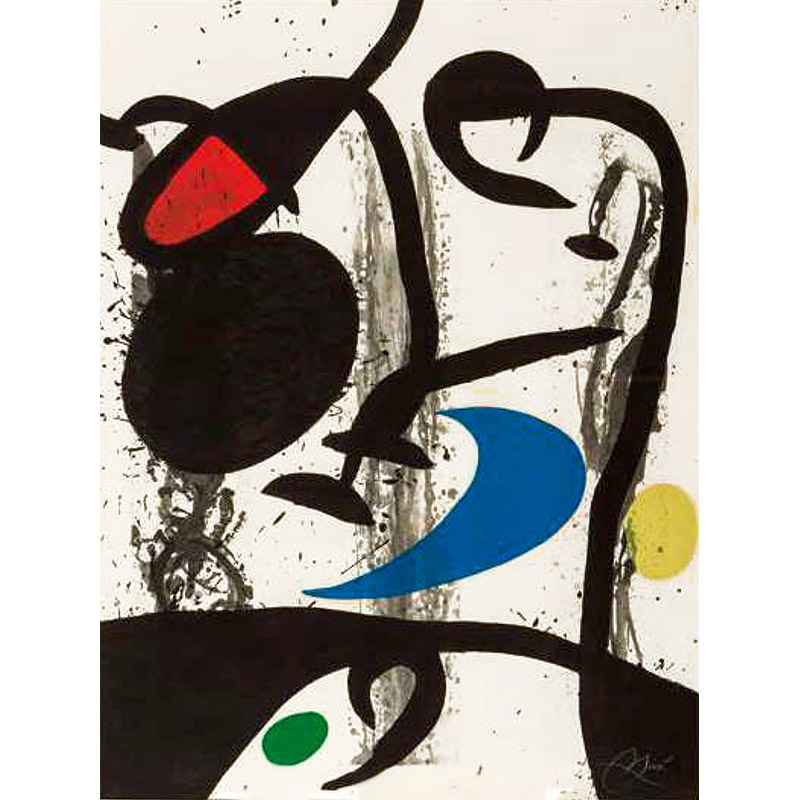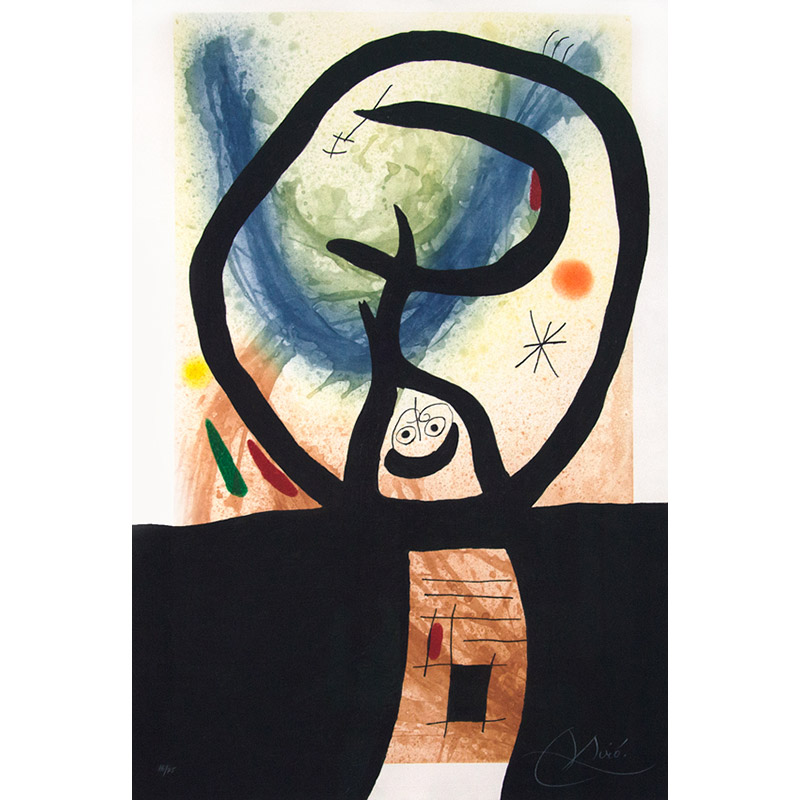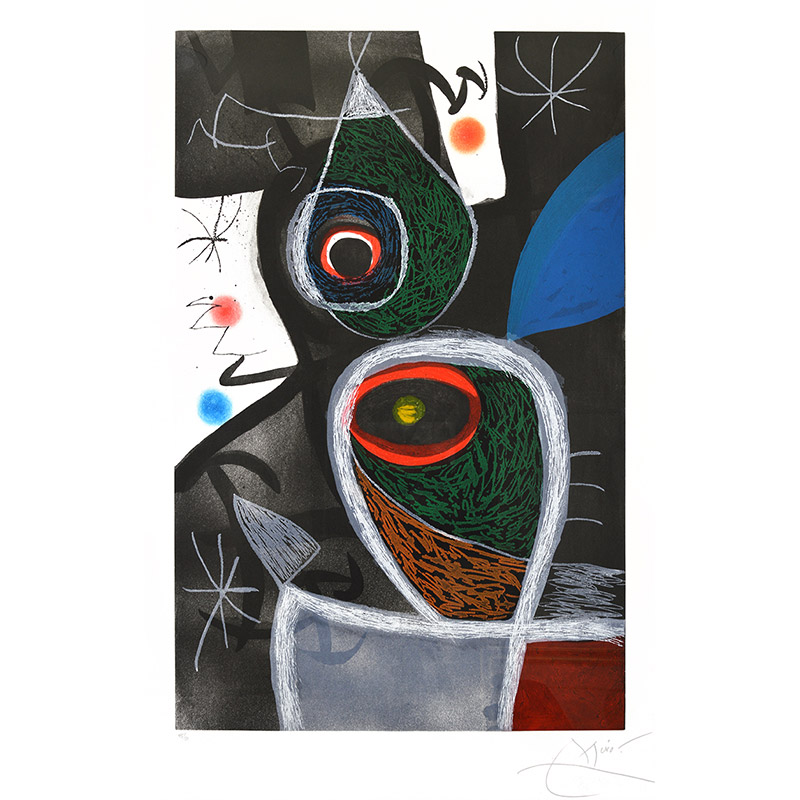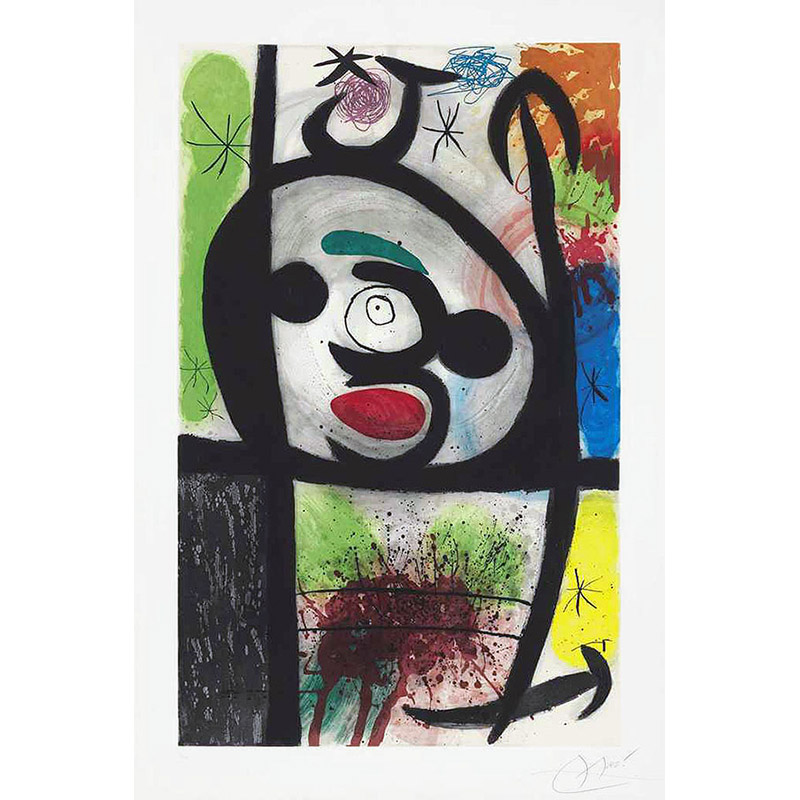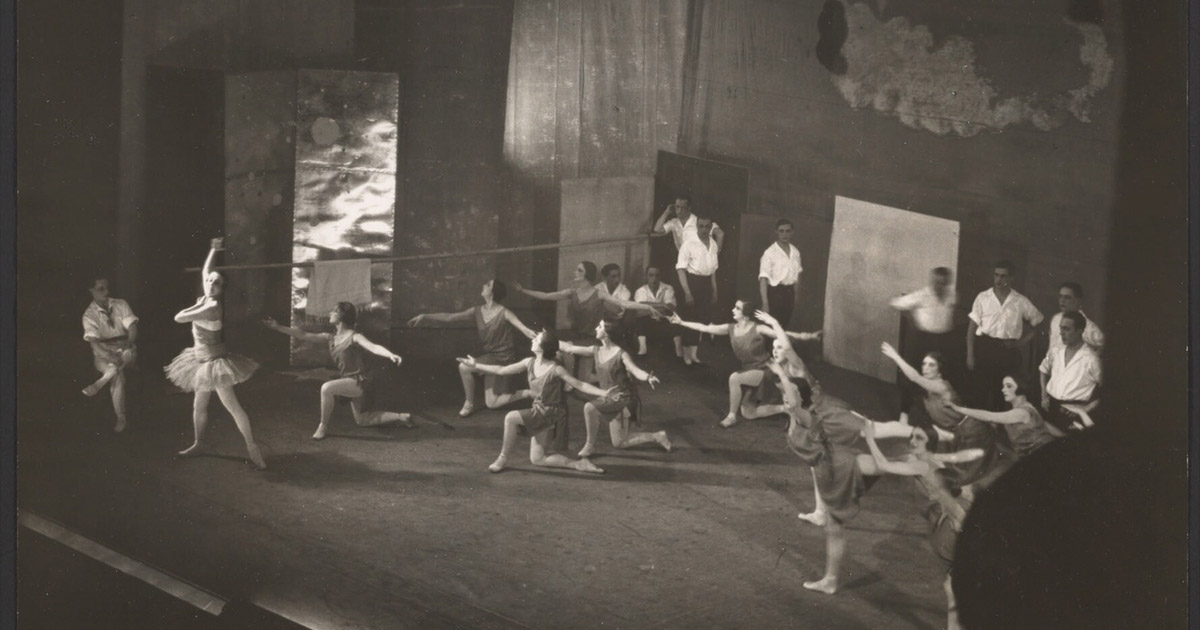Sergei Diaghliev founded the Ballets Russes in 1909. The ballet company toured throughout Europe, North America, and South America until 1929. A hallmark of the Ballets Russes’s success was their frequent iconic collaborations with leading visual artists and designers, choreographers, and composers. Collaborators included Igor Stravinksy, Vasily Kandinksy, Pablo Picasso, Henri Matisse, Coco Chanel, and Joan Miró.
In 1926, Diaghliev decided to organize a Surrealistic adaptation of Shakespeare’s classic Romeo and Juliet to be performed in Monte Carlo. His new version changed a few key plot points—the story changed to be about a rehearsal of a ballet based on Shakespeare’s Romeo and Juliet, in which the lovers elope at the end of the production and exit the stage via plane. Joan Miró and Max Ernst were commissioned to contribute their unique styles to a unique take on a classic story. Ernst contributed the design for the stage curtains, and Miró took on the set designs and costumes.




Miró’s designs were controversial, to say the least. Constant Lambert, the production’s composer, so strongly disliked Miró’s set designs that he called him a “tenth-rate painter from an imbecile group called the Surrealists.” Nonetheless, the production premiered in Monte Carlo without issue on May 4, 1926. When the production traveled to Paris, however, it was met with considerable outrage. The Surrealist group disliked both Miró and Enrst’s involvement with the ballet. In fact, André Breton and Louis Aragon staged a protest on opening night; when the curtain rose to reveal the Miró-designed set, the two unleashed a flurry of red leaflets with “Protest!” written on them.
Performances of this avant-garde version of Romeo and Juliet were short-lived, but the contentious production and Miró’s contributions to it have made an indelible impression on 20th century theater and modernism.

Stage production of the Ballets Russes’s Romeo and Juliet


